Gender Gaps in World Championships
Ben Enowitz | On 27, Aug 2013
Photo courtesy of TrackTownPhoto
Why have Kenyan males outperformed their female counterparts at the World Championships whereas Ethiopian females have performed at a relatively similar level to that of Ethiopian males?
There have been fourteen World Championships in track & field, starting in 1983 and occurring every two years since 1991. Using these fourteen data points and a range of distances it is possible to analyze relative performances between males and females of the same country.
While the data can provide information about these trends, it is more difficult to explain why these trends exist. In this first installment, I look into gender disparities in the middle and long distances (800m, 1500m, 5,000m and 10,000m).
I decided to look at USA, Ethiopia, Kenya, Great Britain, China, Morocco, Spain and Russia[1], which represent close to two-thirds of collective middle distance and distance medals for both genders. While there are arguments for other countries to be included, I wanted to isolate those that seemed most interesting from a political, social and historical standpoint.
Gender disparity can mean a lot of things. I define it in the context of track & field as one gender having a disproportionately large amount of medals or top 5 finishes when compared to the other gender of the same country. While the definition seems straightforward, determining the cause of such disparity is not so simple. It can be caused by an inequality of opportunities, as historically has been the case in many Middle Eastern countries. It also may be the case that the best athletes of one sex may flock to track whereas the other sex is more engaged in other sports (perhaps the best male athletes in Russia play hockey, but the best female athletes run track). However, it may also relate to state-sponsored programs directing performance-enhancing drug toward one gender such as in East Germany in the 1970s and 1980s. Nevertheless, with many factors that can differentiate countries such as wealth, altitude, cultural norms (i.e. “running to school” in Kenya), genetics, training facilities, etc. held constant, it would seem like that there should be limited gender disparity.
My first objective was to determine which of the selected countries (USA, Ethiopia, Kenya, Great Britain, China, Morocco, Spain and Russia) had won the most medals. To no surprise, Kenya and Ethiopia proved to be the most dominant distance running countries, hauling in 64 medals and 55 medals, respectively. Not only was Kenya the most dominant country, it won medals from both the middle and long distances. In contrast, other countries medals were concentrated in certain event groups such as Ethiopia and China in the 5k / 10k, Russia in the 800m / 1500m or Spain in the 1500m.
However, the biggest point of difference between the two distance juggernauts (Ethiopia and Kenya) was which gender was the primary breadwinner. Surprisingly, there was a tremendous difference in gender disparity between the two. The Ethiopians had almost complete gender parity, with males contributing 28 medals and females winning 27 medals, whereas the Kenyans had nearly two-thirds of their medals come from males.
To confirm this trend and increase the sample size, I looked at top 5 finishes for each gender. The trend did not change for Ethiopia and Kenya, but gender disparity widened significantly for Morocco, Spain and Russia.
Once again, Ethiopia had near perfect distribution of medals won by each gender. In contrast, China had complete gender disparity with females achieving every single one of their country’s nine distance medals, every single one of their fourteen top 5 finishes and every single one of the countries top 12 finishes (or top 8 in case of the 800m). This can almost be completely attributed to the Chinese dominance in the early 1990s where Huandi Zhong and Xiuting Wang burst onto the world stage, picking up 2nd and 3rd in the 10k in 1991. China came back even stronger in 1993 where Yunxia Qu, Linli Zhang and Lirong Zhang went 1-2-3 in the 3000m (Note: this was before the women’s 5000m was run) in fast times of 8:28, 8:29 and 8:31 respectively. Junxia Wang and Huandi Zhong represented China well in the 10k that year as well, going 1-2 to win the event in 30:49 and 31:12, respectively. However, China’s only other women’s distance medal since then came in 2003 in the 10k.
Spain also had an interesting explosion in middle distance strength in the late 1990s. Spanish runners won silver and bronze in 1997 and almost matched their performance in the 1999 World Championships. In what must be the fastest 1500m final of all-time, the Spanish runners, bolstered by their home crowd in Seville, ran to a strong 3-4-5 finish, clocking times of 3:30, 3:31 and 3:31, respectively. Hicham El Guerrouj was the winner of the race in a still mind-blowingly fast 3:27.65.
The graphs below zoom in on each country’s gender breakdown of top 5 finishers over the course of history, showing drastic gender disparities in some of the sampled countries.
The graph below summarizes the findings by calculating the following:
| Ratio of male medals to total medals won minus ratio of female medals to total medals won |
The columns highlighted in red indicate female outperformance relative to males and the blue columns reflect cases where males outperformed females. This sample size is evidence that USA, Ethiopia and Great Britain have the greatest gender parity whereas China, Russia and Morocco have the worst. It is interesting to note that the top 2 greatest gaps represent cases where the females outperform their male country mates.
This analysis begs the question of whether gender disparity is changing over time. Put simply, are these percentages getting closer and closer to 50% as time progresses?
The answer seems to be mixed. While Ethiopia saw male outperformance through the 90s (having Haile Gebrselassie certainly helps), it has recently seen a reversal with the plus / minus differential (male top 5 finishes minus female top 5 finishes) trending towards zero. Kenya is also seeing the same trend to a lesser extent, with growing female dominance in the 5k and 10k (Kenya went 1-2-3-4 in the 10k and 1-2-5-6 in the 5k in 2011). Great Britain had almost a zero plus / minus differential until the late 1990s, where its females started to outperform soon thereafter thereby widening the gender gap. The recent dominance of Mo Farah in the 5k and 10k has helped to reverse this trend.
While these trends are interesting, we are left to ponder the reason behind them. I came across an interesting article that tries to answer this question by regressing gender age gaps against the ratio of male medals to female medals. He found, albeit with a limited correlation, that there is a negative relationship between income inequality and the ratio of male medals to female medals. This means as the gender wage gap (difference between median incomes of men and women) widened, more females won medals relative to their male counterparts. The counter intuitiveness inspires the imagination as to what could cause such a finding. It may just be the case that data inspires the story, but does not complete it.
——————————
For those who are interested, a more detailed breakdown by event of plus / minus differentials.
“There is a magic in graphs. The profile of a curve reveals in a flash a whole situation – the life history of an epidemic, a panic, or an era of prosperity. The curve informs the mind, awakens the imagination, convinces.”- Henry D. Hubbard (1939)
[1] The 1987 and 1983 World Championships reflect the USSR and thus, all Russian data comes from 1991 and all other World Championships thereafter.
-
Nothing to argue here. Ben was an applied mathematics major at Harvard.


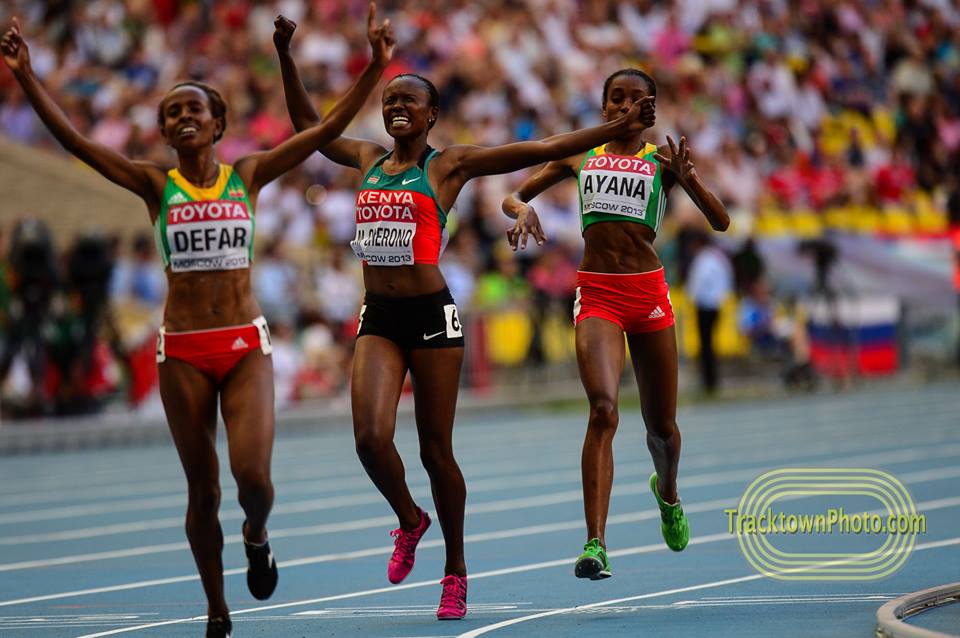
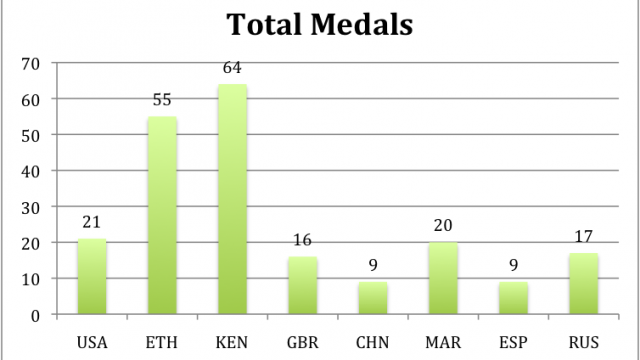
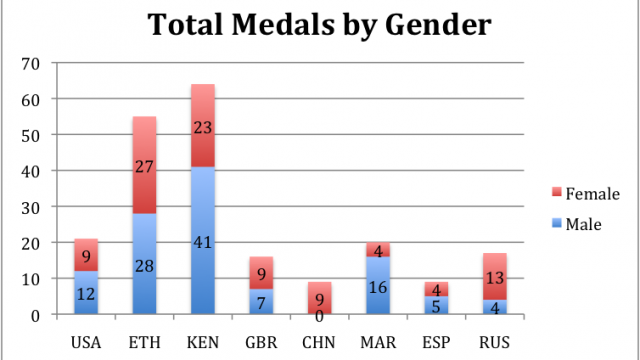
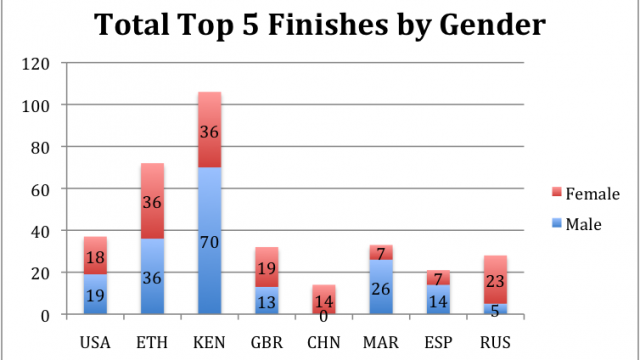

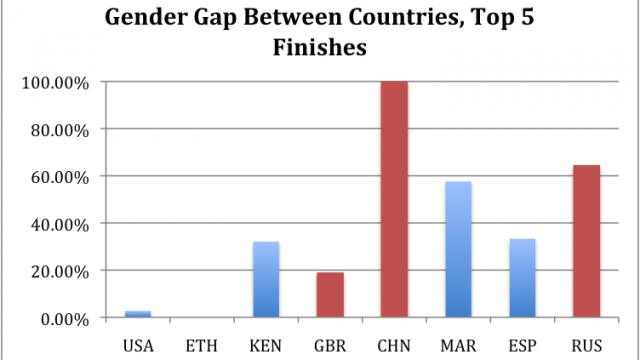
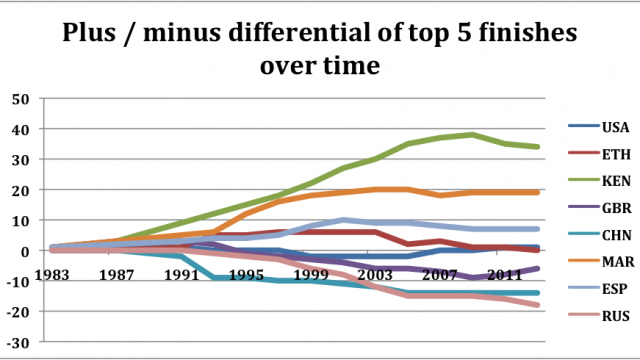
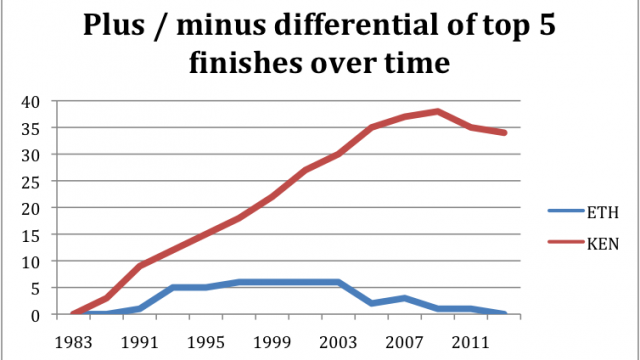
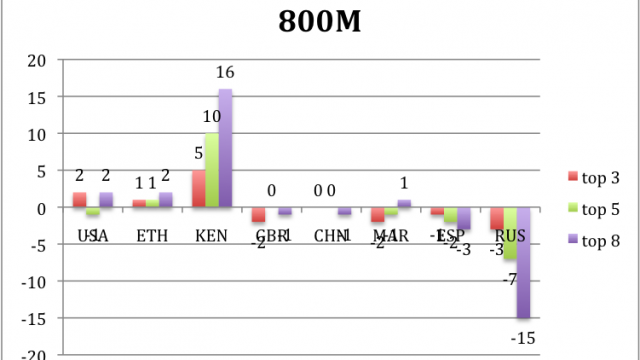
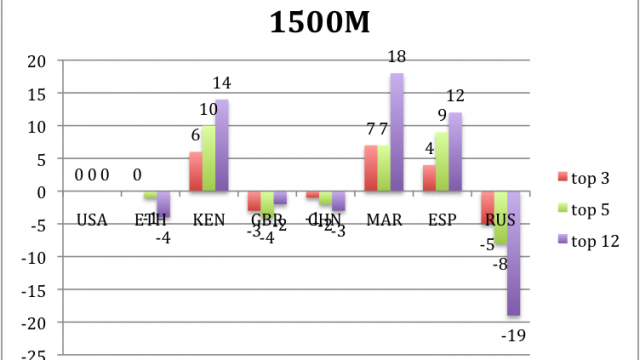


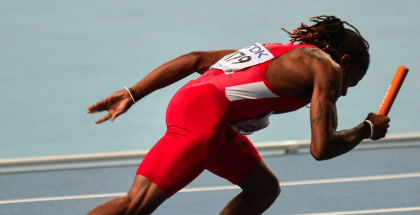
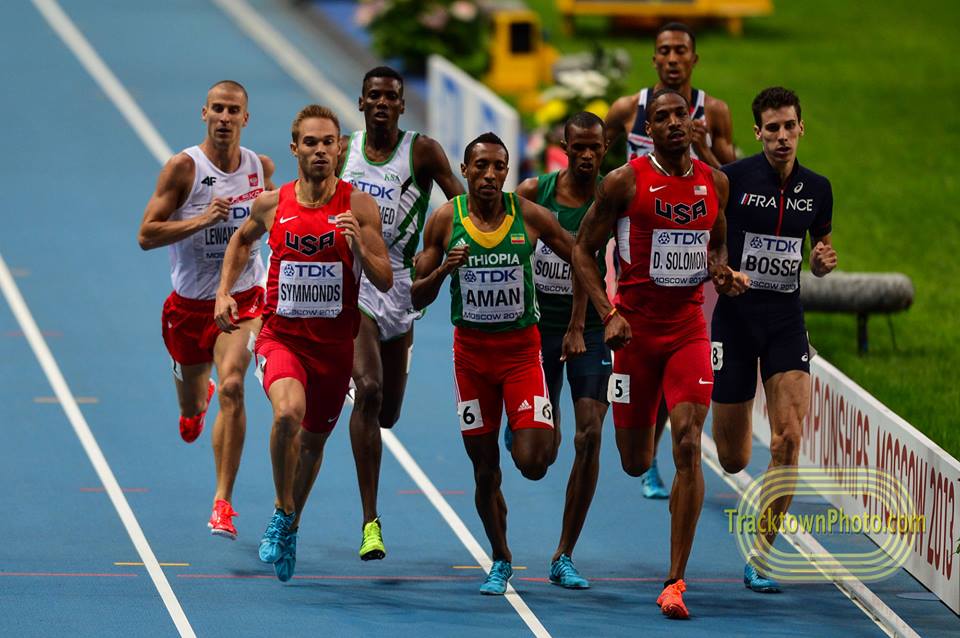














Comments